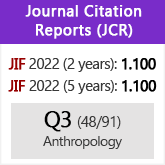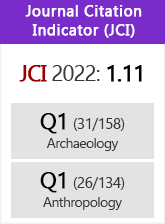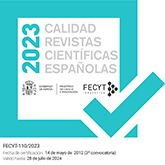Intensive survey methods in the framework of a regional project: the Serena Region study case
DOI:
https://doi.org/10.3989/tp.2009.09010Keywords:
Serena Region, Archaeology of Agrarian Landscapes, Archaeological Surface SurveyAbstract
The aim of this paper is to show the survey methods developed in the framework of a research project carried out in the Serena region (Badajoz Province, Spain). We start from a critical use of the notion of archaeological site and an assessment of the meaning of intensive surface collection in the context of the study of the structure of preindustrial agrarian landscapes. We offer a detailed exposition of the survey planning, data capture and spatial analysis. In a first stage we make a global estimate of density of surface finds, locating possible areas of interest. In a second phase detected dispersions are qualified by systematic sampling. Its main purpose is to dismiss selective procedures leading to remarkable biases in surface record. We emphasize the balance achieved between data resolution and effort invested. This method has shown its effectiveness to characterize archaeological entities often not considered in Peninsular regional projects. Other factors affecting the recognition of sherd scatters are discussed, like the so-called “background noise”.
Downloads
References
Alcock, S.; Cherry, J.F. y Davis, J.L. 1994: “Intensive survey, agricultural practice and the classical landscape of Greece”. En I. Morris (ed.): Classical Greece: Ancient Histories and Modern Archaeologies. Cambridge University Press. Cambridge: 137-169.
Banning, E.B. 2002: Archaeological Survey. Kluwer Academic/ Plenum Publishers. Nueva York.
Baxter, M.J.; Beardah, C.C. y Wright, R.V. 1997: “Some Archaeological Applications of Kernel Density Estimates”. Journal of Archaeological Science 24: 347-354. doi:10.1006/jasc.1996.0119
Bintliff, J.L. y Snodgrass, A.M. 1985: “The Cambridge/Bradford Boeotian Expedition: the First Four Years”. Journal of Field Archaeology 12: 123-161. doi:10.2307/530288
Blanton, R.E. 2001: “Mediterranean myopia”. Antiquity 75: 627-29.
Burillo, F.; Ibáñez, J. y Alegre, E. 2005: “Prospección y concepto de asentamiento. El caso de la ciudad celtibérica de Segeda”. Arqueología Espacial 24-25: 165-184.
Campana, S. 2006: “DGPS e mobile GIS per l’archeologia dei paesaggi”. En S. Campana y R. Francovich (eds.): Laser scanner e GPS: paesaggi archeologici e tecnologie digitali 1, atti del workshop, 3 marzo 2005 Grosseto. Edizioni all’Insegna del Giglio. Florencia: 201-225.
Celestino Pérez, S. 1996: El Palacio-Santuario de Cancho Roano V-VI-VII. Los sectores oeste, sur y este. Junta de Extremadura, publicaciones del Museo Arqueológico Provincial de Badajoz 3. Badajoz.
Celestino Pérez, S. (ed.) 2003: Cancho Roano VIII y IX. Los materiales arqueológicos. Instituto de Arqueología, CSIC. Mérida.
Celestino Pérez, S. y Jiménez Ávila, J. 1993: El Palacio-Santuario de Cancho Roano IV. El sector norte. Bartolomé Gil Santacruz. Badajoz.
Celestino Perez, S. y Walid, S. 2003: “Proyecto arqueológico “La Serena”. En S. Torallas Tovar (ed.): Memoria. Seminarios de Filología e Historia. CSIC. Madrid: 47-53.
Chapa Brunet, T.; Uriarte González, A.; Vicent, J.M.; Mayoral Herrera, V. y Pereira Sieso, J. 2003: “Propuesta metodológica para una prospección arqueológica sistemática: el caso del Guadiana Menor (Jaén, España)”. Trabajos de Prehistoria 60: 11-34.
Chapa Brunet, T.; Vicent, J.M.; Uriarte González, A.; Mayoral Herrera, V. y Pereira Sieso, J. 2004: “Un programa de prospecciones arqueológicas para el valle del Guadiana Menor (Jaén)”. Arqueología Espacial 24-25: 123-144.
Foley, R. 1981: “Off-site archaeology: an alternative approach for the short-sited”. En I. Hodder, N. Hammond y G. Isaac (eds.): Pattern of the Past: Essays in honour of David L. Clarke. Cambridge University Press. Cambridge: 157-183.
Gallant, T.W. 1986: “Background noise and site definition: a contribution to survey methodology”. Journal of Field Archaeology 13: 403-418. doi:10.2307/530167
Gillings, M. 2000: “The utility of the GIS approach in the collection, management, storage and analysis of surface survey data”. En J. Bintliff, M. Kuna y N. Venclova (eds.): The Future of Surface Artefact Survey. Sheffield University Press. Sheffield: 105-120.
Gutiérrez, L.M.; Royo, M.Á.; Bellón, J.P. y Barba, V. 1998: “Microprospección de superficie en el entorno del monumento”. En M. Molinos, T. Chapa, A. Ruiz, J. Pereira, C. Rísquez, A. Madrigal, A. Esteban, V. Mayoral y M. Llorente (eds.): El santuario heróico de El Pajarillo. Huelma. Universidad de Jaén. Jaén: 155-196.
Hayes, P.P. 1991: “Models for the distribution of pottery around former agricultural settlements”. En A. Schofield (ed.): Interpreting Artefact Scatters. Contributions to Ploughzone Archaeology. Oxbow. Oxford: 81-92.
Keay, S.J.; Creighton, J. y Jordan, D. 1991: “Sampling Ancient Towns”. Oxford Journal of Archaeology 10: 371-383. doi:10.1111/j.1468-0092.1991.tb00026.x
Maluquer de Motes, J. 1981: El santuario protohistórico de Zalamea de la Serena (Badajoz) IV. 1978-1981. CSIC. Barcelona.
Maluquer de Motes, J. 1983: El santuario protohistórico de Zalamea de la Serena (Badajoz) V. 1981-1983. CSIC. Barcelona.
Mattingly, D. 2000: “Methods of collection, recording and quantification”. En R. Francovich, H. Patterson y G. Barker (eds.): Extracting meaning from ploughsoil assemblages. The Archaeology of Mediterranean Landscapes. Oxbow books. Oxford: 5-15.
Mayoral Herrera, V.; Chapa Brunet, M.T.; Uriarte González, A. y Cabrera Díez, A. 2006: “Escuchando el ruido de fondo: estrategias para el estudio de los paisajes agrarios tardoibéricos en la región del Guadiana Menor”. Arqueología espacial 26: 87-114.
Nieto Masot, A.; Hernández Carretero, A. y Leco Berrocal, F. 2003: “Metodología de prospección arqueológica mediante imágenes Landsat TM y Spot PAN en Zalamea de la Serena (Badajoz)”. IX Conferencia Iberoamericana de Sistemas de Información Geográfica (Cáceres, 2003): CDRom.
Ortiz Romero, P. 1995: “De recintos, torres y fortines: Usos (y abusos)”. Extremadura arqueológica 5: 177-194.
Rodríguez Díaz, A. y Ortiz Romero, P. 1998: “Culturas indígenas y romanización en Extremadura: castros, ‘oppida’ y recintos ciclópeos”. En A. Rodríguez Díaz (ed.): Extremadura protohistórica: paleoambiente, economía y poblamiento. Universidad de Extremadura. Cáceres: 247-278.
Rodríguez Díaz, A. y Ortiz Romero, P. 2003: “Defensa y territorio en la Beturia: castros, oppida y recintos ciclópeos”. En A. Morillo Cerdán, F. Cadiou y D. Hourcade (eds.): Defensa y territorio en Hispania de los Escipiones a Augusto (espacios urbanos y rurales, municipales y provinciales): coloquio celebrado en la Casa de Velázquez (19 y 20 de marzo de 2001). Universidad de León, Secretariado de Publicaciones y Medios Audiovisuales. Casa de Velázquez. Madrid-León: 219-252.
Rodríguez Díaz, A. y Ortiz Romero, P. 2004: “La torre de Hijovejo: génesis, evolución y contexto de un asentamiento fortificado en La Serena (Badajoz)”. En P. Moret y T. Chapa Brunet (eds.): Torres, atalayas y casas fortificadas: explotación y control del territorio en Hispania (s. III a. de C.-s. I d. de C.). Universidad de Jaén. Jaén: 77-98.
Ruiz Zapatero, G. 2004: “La prospección arqueológica de superficie en los inicios del siglo XXI”. Arqueología Espacial 24-25: 17-31.
Wheatley, D. y Gillings, M. 2002: Spatial Technology and Archaeology. The Archaeological Application of GIS. Taylor and Francis. Londres-Nueva York.
Wilkinson, T. 1982: “The Definition of Ancient Manured Zones by Means of Extensive Sherd-sampling Techniques”. Journal of Field Archaeology 9: 323-333. doi:10.2307/529667
Wilkinson, T. 1989: “Extensive sherd scatters and land-use intensity: some recent results”. Journal of Field Archaeology 16: 31-46. doi:10.2307/529879
Downloads
Published
How to Cite
Issue
Section
License
Copyright (c) 2009 Consejo Superior de Investigaciones Científicas (CSIC)

This work is licensed under a Creative Commons Attribution 4.0 International License.
© CSIC. Manuscripts published in both the printed and online versions of this Journal are the property of Consejo Superior de Investigaciones Científicas, and quoting this source is a requirement for any partial or full reproduction.All contents of this electronic edition, except where otherwise noted, are distributed under a “Creative Commons Attribution 4.0 International” (CC BY 4.0) License. You may read here the basic information and the legal text of the license. The indication of the CC BY 4.0 License must be expressly stated in this way when necessary.
Self-archiving in repositories, personal webpages or similar, of any version other than the published by the Editor, is not allowed.

















